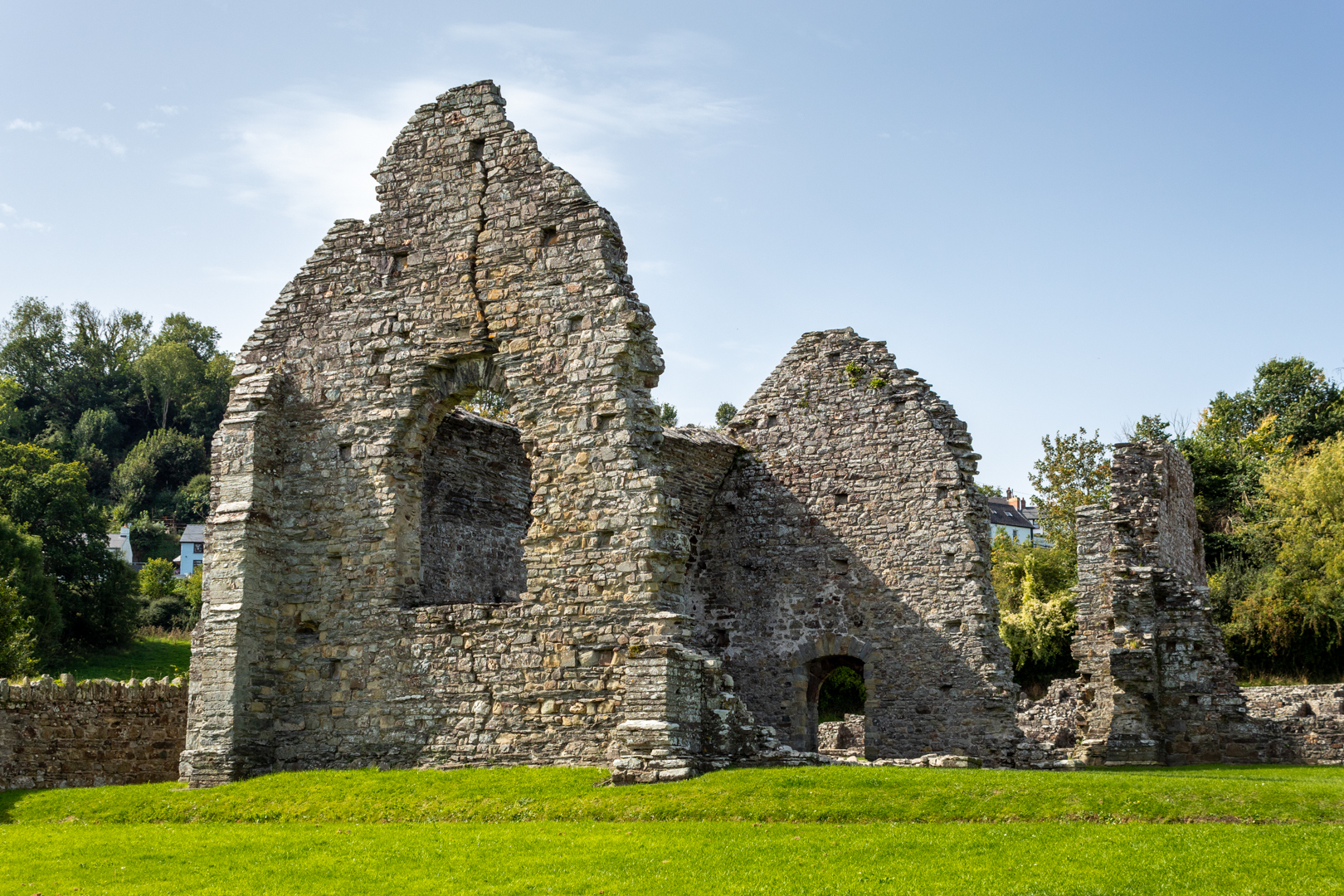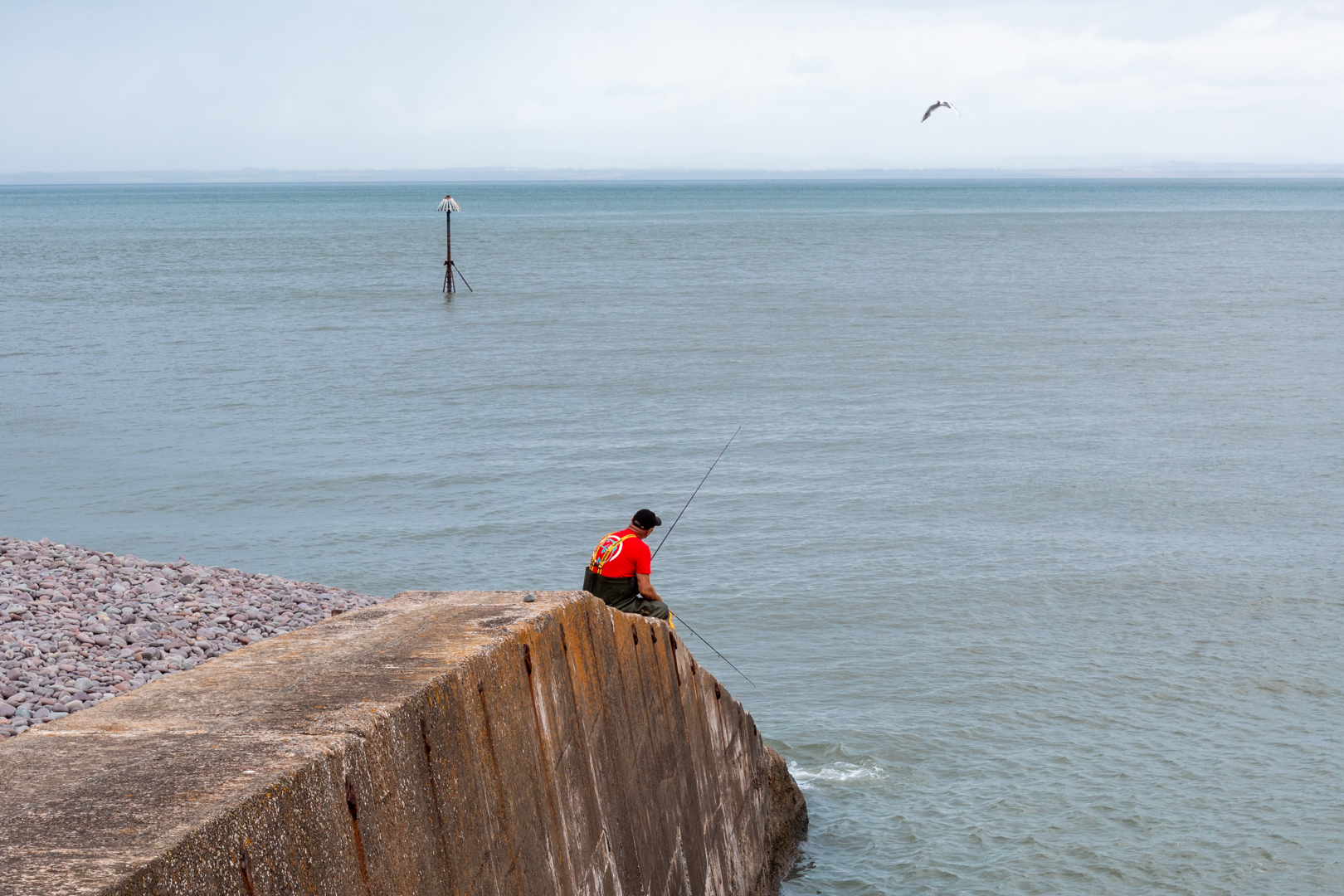Founded in 1120 on the site of an earlier pre-Norman church, St. Dogmael’s status as a religious centre can be seen in extensive ruins which span four centuries of monastic life. Elements of the church and cloister are 12th century in origin, while the tall west and north walls of the nave are 13th century.
Visit Date September 2023
 |
| St Dogmaels Abbey - Infirmary |
St Dogmaels story starts long before the abbey was built.
The Abbey was constructed and inhabited by The Monks of Tiron.
 |
| St Dogmaels Abbey - Infirmary |
The Tironensian Order or the Order of Tiron was a medieval monastic order named after the location of the mother abbey (Tiron Abbey, French: Abbaye de la Sainte-Trinité de Tiron, established in 1109)
 |
| St Dogmaels Abbey - Infirmary |
The foundation of Tiron Abbey by Bernard of Abbeville was part of wider movements of monastic reform in Europe in the eleventh and twelfth centuries. Bernard intended to restore the asceticism and strict observance of the Rule of St. Benedict in monastic life, insisting on manual labour.
 |
| St Dogmaels Abbey - The Nave & West Wing |
Tiron was the first of the new religious orders to spread internationally. Within less than five years of its creation, the Order of Tiron owned 117 priories and abbeys in France, Britain and Ireland.
 |
| St Dogmaels Abbey - The Nave & West Wing |
Tiron's influence in Britain was limited. St Dogmaels was the only Tironian abbey to be established in Wales or England, although the house also had daughter priories in Wales and Ireland. A few Tironian abbeys were established in Scotland, but they soon formed their own independent order.
 |
| St Dogmaels Abbey - The infirmary |
And so in in 1120 on the site of an earlier pre-Norman church, St Dogmael’s status as a religious centre was created.
 |
| The Chancel with a Crypt |
The monastic vows laid great stress on poverty, chastity and obedience, and these ideals were characteristic of the monastic life, especially in the early years. The abbey would have taken in any pilgrims and travelers requiring hospitality.
 |
| The Refectory with the Cloister and Nave in the background |
Not all aspects of the monastic life at St Dogmaels continued to flourish, and in later centuries the abbey suffered from a decline in standards as well as in its financial position. In 1402, for instance, at the time of the visitation by the bishop of St David’s, it appears that only 4 monks were left in the abbey and they were of disrepute, it having been noted, "They were gluttonous and one of them named as Howel Lange had been found drunk and because of this and his "evil deeds" he was banned from drinking any alcohol for a year".
 |
| The Refectory |
After this visit for some time, the abbey saw an improvement in its monastic life but despite this, St. Dogmaels was never raised to the levels seen years before and its life as a monastery was declining again and was ended during the reign of King Henry VIII when in 1536 it took its place with many other places with an income of less than £200 a year.
 |
| The North Transept |
The assessed annual value of the monastery at the dissolution was £87 8s.6d
 |
| St Dogmaels Abbey - The North Transept |
Much of the abbey's possessions, including Caldey and Fishguard were leased to John Bradshaw of Presteigne, in Radnorshire. A few years later, in 1543, Bradshaw was able to purchase the properties which he already had on lease. He built a mansion for himself, almost certainly within the abbey grounds, and possibly took stone from the abbey buildings for its construction. It is thought that none of the remains of these buildings can be seen today.
 |
| St Dogmaels Abbey - The North Transept |
It was reported that by the start of the 17th century, the site was in a ruinous state.
In 1646 the site was bought by David Parry of Neuadd-Trefawr, near Cardigan but he never lived there.
 |
| The North Transept, Nave and Guest House |
Early in the eighteenth century, a new parish church was erected alongside the old abbey church. A century later, in 1847, this was replaced by St Thomas' Church which now stands on the site.
 |
| St. Thomas' Church |
The original plans were made in 1847 for a church to cost £600, but the final cost was £1,500. A tower was proposed but funds were insufficient. Daniel Evans of Cardigan superintended the building, and John Davies and John Thomas of Llechryd were the contractors.
 |
| St. Thomas' Church |
 |
| St. Thomas' Church |
 |
| St. Thomas' Church |
1866, a vicarage and its coach house were added with materials from the old abbey buildings.
 |
| St. Thomas' Church |
In 1934 the remains of the abbey were placed in State guardianship by the Representative Body of the Church in Wales. The site was cleared and the masonry consolidated between 1947 and 1968 and the ruins are now maintained by Cadw: Welsh Historic Monuments.
 |
| St Dogmael |
Finally, Saint Dogmael was a 6th-century Welsh monk and preacher who is considered a saint. His feast day is 14 June.
Saint Dogmael seems to have concentrated his preaching in Pembrokeshire, where there are several churches dedicated to him.
Footer:Visit Information: -
Google Reference: -
52.080568145326666, -4.680455205913844
Google search term:
St Dogmaels Abbey
What Three Words reference: -
///rescuer.conspire.same
OS Details: -
SN 16401 45858 Altitude:62 ft
Additional information.
Visiting is very easy.
Google Reference: -
52.080568145326666, -4.680455205913844
Google search term:
St Dogmaels Abbey
What Three Words reference: -
///rescuer.conspire.same
OS Details: -
SN 16401 45858 Altitude:62 ft
Additional information.
Visiting is very easy.
A487 and then B4546 to the Abbey
There is limited parking at the site. (52.08084819413824, -4.679396371342211) and this is not always available especially on Tuesdays when it is the venue for the local market. but a better bet is at the town parking (52.08178485298606, -4.677090769613847) and it is just a short 200 m walk to the Abbey.
There is limited parking at the site. (52.08084819413824, -4.679396371342211) and this is not always available especially on Tuesdays when it is the venue for the local market. but a better bet is at the town parking (52.08178485298606, -4.677090769613847) and it is just a short 200 m walk to the Abbey.
There is a great cafe and also museum an the site.

















